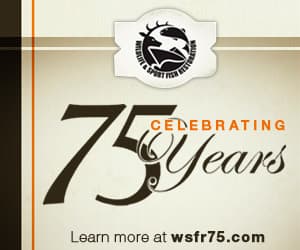A Tale of Two Success Stories: Hunter Education and Wildlife and Sportfish Restoration
Tammy Sapp 02.02.12

As we observe the 75th anniversary of our Wildlife and Sportfish Restoration (WSFR) programs, many will point to the now abundant populations of elk, deer and wild turkeys as the poster children for conservation success. Some will laud the hunting, fishing and boating opportunities we now enjoy as a result of WSFR’s user pay/user benefit principle. Or praise how cooperation between state and federal government, conservation groups, industry and sportsmen made it possible to contribute billions of dollars to fish and wildlife conservation.
All are good reasons to celebrate.
Another noteworthy accomplishment on the Wildlife Restoration side is how this program has benefitted hunter education. Excise taxes paid by manufacturers — which are factored into the cost of firearms, ammunition and archery equipment — are made available to the states in the form of grants. These grants not only support wildlife projects, they fund hunter education and shooting range development as well.
The interesting part about this is the history behind hunter education and Federal Aid in Wildlife Restoration programs. I interviewed Steve Hall, who retired from Texas Parks and Wildlife after 26 years of service as education director. Hall, who currently serves as the executive director of the Texas State Rifle Association, reminded me that hunter education is by no means new.
“The first seeds were planted in 1928 when Seth Gordon, an employee of the Pennsylvania and California game agencies, penned a code of outdoor ethics for the Izaak Walton League of America,” Hall said. “That code marked the beginning of ideas about safety and respect for wildlife, property and other people.”
According to Hall, World War II put many wildlife programs on hold. However, when the soldiers came back home, they swelled the ranks of hunters. It wasn’t long, though, before a growing number of firearms-related hunting incidents fueled safety concerns.
By the 1940s, Kentucky was offering gun safety training in their high school junior clubs and in boys and girls summer camps. Soon after, Michigan and Montana began developing their own programs. The era of mandatory hunter safety training started in 1949 as the result of legislation in New York. A partnership with the NRA helped New York deliver its curriculum.
“The hunter safety community really began maturing in the 1950s when programs to recruit and train volunteer instructors were introduced,” Hall said. “Today’s volunteer army of instructors is a big reason why hunter education programs are so successful.”
Hunter safety programs took another major step in the 1960s when the NRA hosted the first of several annual hunter safety coordinator workshops in 1966.
“The hunter safety leaders who met at these workshops saw the needs for standardized instruction and recognition of training between states,” Hall said. “Their vision laid the groundwork for a new organization dedicated to developing safe, responsible hunters.”
In 1971, a steering committee associated with the International Association of Fish and Wildlife Agencies became the launch pad for creating the North American Association of Hunter Safety Coordinators. The organization, which was founded in 1972, immediately set to work on its mission of providing leadership and support to hunter education program administrators and instructors. Today, it’s called the International Hunter Education Association, and 2012 marks the 40th anniversary of an organization that now serves 69 member agencies and 70,000 volunteer instructors who teach hunter education around the world.
1972 was a big year for another reason, and it brings this story full circle. That was when the Federal Aid in Wildlife Restoration Act was amended to help fund hunter safety programs. Now hunter education programs across the country were not only benefitting from the leadership of a new organization, now they had money to train volunteer instructors, develop teaching aids and standardize the lessons so a hunter education graduate could hunt safely in any state in the country.
In the years since then, millions of students have taken hunter education and hunting has become one of the safest ways families and friends can enjoy the outdoors. Hunters and shooters not only contribute to safety programs, their dollars have restored wildlife populations and provided countless recreational opportunities that all citizens can enjoy.
How hunter education training is offered also has changed with the times. Today, students can take part of their course online at http://www.hunter-ed.com. The training offered at this site is approved by the state agencies responsible for hunter education, and students study the same material that’s taught in the classroom. The online portion is typically followed by a field course, which gives students the chance to shoot and demonstrate safe firearms handling and outdoor skills.
So honor these milestones of conservation and hunter education success by heading afield as often as possible this year. Make it extra special by purchasing a hunting license and introducing someone new to the outdoors.

